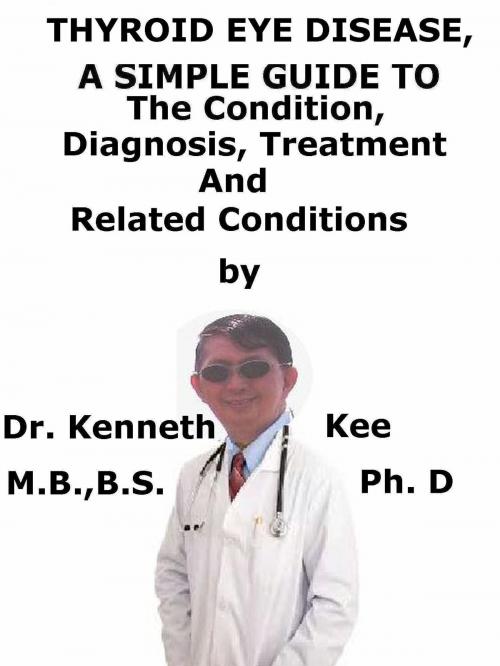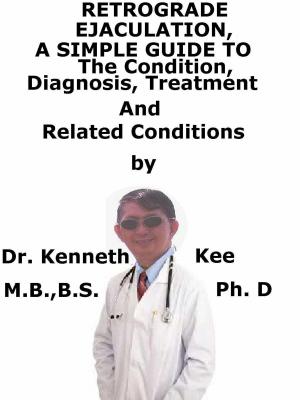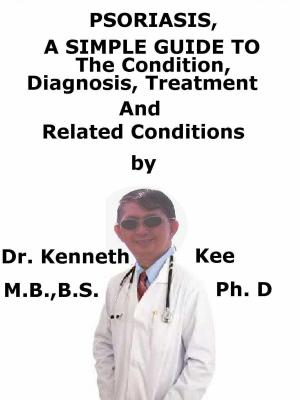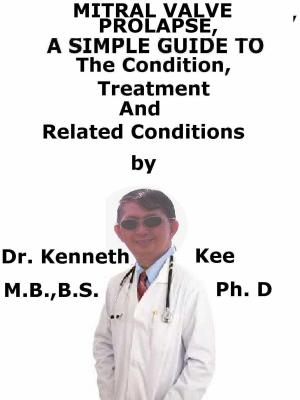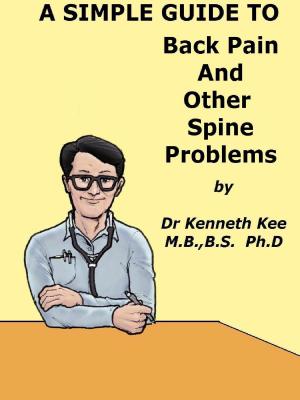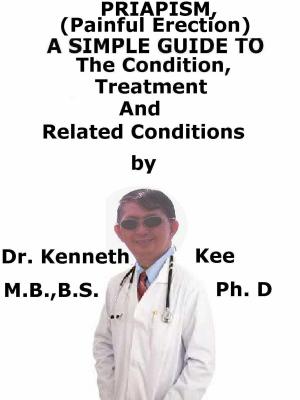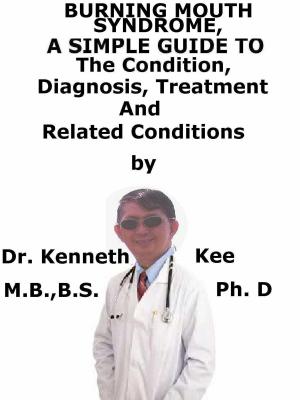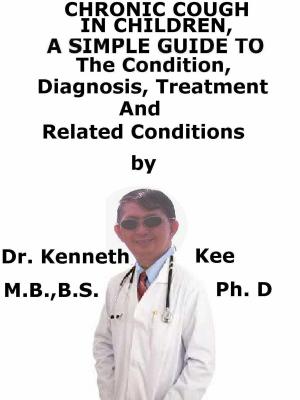Thyroid Eye Disease, A Simple Guide To The Condition, Diagnosis, Treatment And Related Conditions
Nonfiction, Health & Well Being, Medical, Specialties, Ophthalmology, Internal Medicine, Endocrinology & Metabolism| Author: | Kenneth Kee | ISBN: | 9781370443345 |
| Publisher: | Kenneth Kee | Publication: | September 19, 2017 |
| Imprint: | Smashwords Edition | Language: | English |
| Author: | Kenneth Kee |
| ISBN: | 9781370443345 |
| Publisher: | Kenneth Kee |
| Publication: | September 19, 2017 |
| Imprint: | Smashwords Edition |
| Language: | English |
Thyroid eye disease (TED) is a medical disorder marked by swelling of the muscles and fatty tissues surrounding the eyeball within the eye socket (orbit).
This swelling is due to the inflammation of these tissues.
There is restricted space inside the eye orbit so when the tissues swell, the eyeball is pushed forward.
Cause:
Thyroid eye disease is an eye condition linked to autoimmune thyroid disease.
Symptoms of Thyroid disease:
1. Neck thyroid swelling
2. Heat intolerance
3. Tremors
4. Sweatiness
5. Loss of weight
6. Palpitations
Autoimmune thyroid disease happens when the body's antibodies attack tissues of the thyroid organ.
This is called Thyroid Eye Disease, an autoimmune disease.
The cause is not known exactly why this happens in some people and not in others.
Symptoms are produced by the tissues of the eye socket swelling and pushing the eyeball forward:
The biochemical events result in swelling of the orbital soft tissues particularly the eye muscles and orbital fat.
Eye symptoms are:
1. Blurring of vision
2. Staring appearance of eyes
3. Protrusion of the eyes
4. Tearing
5. Eye discomfort and gritty sensation
6. Eye redness
7. Puffy eyelids
8. Double vision
9. Squint
10. Reduced vision
Diagnosis:
Thyroid function tests (TFTs)
MRI scan
Treatment:
Most thyroid eye disorder gets better with good thyroid hormone control.
Local therapy:
Tear substitutes and lubricants help to cover the surface of the eye from drying.
Sleeping on extra pillows assists to decrease swelling around the eyes.
Double vision is problematic if it involves forward and down looking positions as in reading.
Special lenses called prisms may give relief for this.
Medicines
Medical therapy (immunosuppressive and radiotherapy) are more effective in the acute phase of the disease.
In the early stage of the disease and where the disease stays mild, artificial tears (ocular lubricants) may be enough.
Immunosuppression
Steroids are given in selected cases, normally taken orally
Surgery
Surgical treatment is normally reserved for patients in the inactive stage.
With injured vision, early lid surgery or orbital surgery is necessary
Surgery is reserved normally for inactive disease.
Surgical rehabitation is normally staged with orbital decompression surgery to decrease proptosis.
Squint and eyelid surgeries may eliminate double vision and exposure respectively.
Radiotherapy
Radiotherapy may be done in some places on some patients
TABLE OF CONTENT
Introduction
Chapter 1 Thyroid Eye Disease
Chapter 2 Causes
Chapter 3 Symptoms
Chapter 4 Diagnosis
Chapter 5 Treatment
Chapter 6 Prognosis
Chapter 7 Hyperthyroidism
Chapter 8 Goiter
Epilogue
Thyroid eye disease (TED) is a medical disorder marked by swelling of the muscles and fatty tissues surrounding the eyeball within the eye socket (orbit).
This swelling is due to the inflammation of these tissues.
There is restricted space inside the eye orbit so when the tissues swell, the eyeball is pushed forward.
Cause:
Thyroid eye disease is an eye condition linked to autoimmune thyroid disease.
Symptoms of Thyroid disease:
1. Neck thyroid swelling
2. Heat intolerance
3. Tremors
4. Sweatiness
5. Loss of weight
6. Palpitations
Autoimmune thyroid disease happens when the body's antibodies attack tissues of the thyroid organ.
This is called Thyroid Eye Disease, an autoimmune disease.
The cause is not known exactly why this happens in some people and not in others.
Symptoms are produced by the tissues of the eye socket swelling and pushing the eyeball forward:
The biochemical events result in swelling of the orbital soft tissues particularly the eye muscles and orbital fat.
Eye symptoms are:
1. Blurring of vision
2. Staring appearance of eyes
3. Protrusion of the eyes
4. Tearing
5. Eye discomfort and gritty sensation
6. Eye redness
7. Puffy eyelids
8. Double vision
9. Squint
10. Reduced vision
Diagnosis:
Thyroid function tests (TFTs)
MRI scan
Treatment:
Most thyroid eye disorder gets better with good thyroid hormone control.
Local therapy:
Tear substitutes and lubricants help to cover the surface of the eye from drying.
Sleeping on extra pillows assists to decrease swelling around the eyes.
Double vision is problematic if it involves forward and down looking positions as in reading.
Special lenses called prisms may give relief for this.
Medicines
Medical therapy (immunosuppressive and radiotherapy) are more effective in the acute phase of the disease.
In the early stage of the disease and where the disease stays mild, artificial tears (ocular lubricants) may be enough.
Immunosuppression
Steroids are given in selected cases, normally taken orally
Surgery
Surgical treatment is normally reserved for patients in the inactive stage.
With injured vision, early lid surgery or orbital surgery is necessary
Surgery is reserved normally for inactive disease.
Surgical rehabitation is normally staged with orbital decompression surgery to decrease proptosis.
Squint and eyelid surgeries may eliminate double vision and exposure respectively.
Radiotherapy
Radiotherapy may be done in some places on some patients
TABLE OF CONTENT
Introduction
Chapter 1 Thyroid Eye Disease
Chapter 2 Causes
Chapter 3 Symptoms
Chapter 4 Diagnosis
Chapter 5 Treatment
Chapter 6 Prognosis
Chapter 7 Hyperthyroidism
Chapter 8 Goiter
Epilogue
